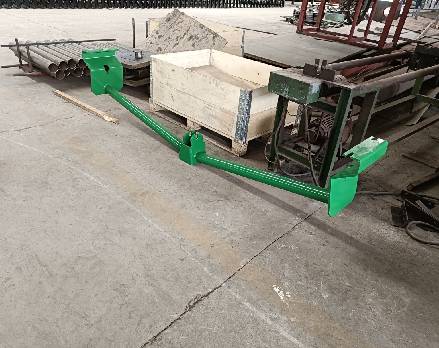 Afrikaans
Afrikaans  Albanian
Albanian  Amharic
Amharic  Arabic
Arabic  Armenian
Armenian  Azerbaijani
Azerbaijani  Basque
Basque  Belarusian
Belarusian  Bengali
Bengali  Bosnian
Bosnian  Bulgarian
Bulgarian  Catalan
Catalan  Cebuano
Cebuano  Corsican
Corsican  Croatian
Croatian  Czech
Czech  Danish
Danish  Dutch
Dutch  English
English  Esperanto
Esperanto  Estonian
Estonian  Finnish
Finnish  French
French  Frisian
Frisian  Galician
Galician  Georgian
Georgian  German
German  Greek
Greek  Gujarati
Gujarati  Haitian Creole
Haitian Creole  hausa
hausa  hawaiian
hawaiian  Hebrew
Hebrew  Hindi
Hindi  Miao
Miao  Hungarian
Hungarian  Icelandic
Icelandic  igbo
igbo  Indonesian
Indonesian  irish
irish  Italian
Italian  Japanese
Japanese  Javanese
Javanese  Kannada
Kannada  kazakh
kazakh  Khmer
Khmer  Rwandese
Rwandese  Korean
Korean  Kurdish
Kurdish  Kyrgyz
Kyrgyz  Lao
Lao  Latin
Latin  Latvian
Latvian  Lithuanian
Lithuanian  Luxembourgish
Luxembourgish  Macedonian
Macedonian  Malgashi
Malgashi  Malay
Malay  Malayalam
Malayalam  Maltese
Maltese  Maori
Maori  Marathi
Marathi  Mongolian
Mongolian  Myanmar
Myanmar  Nepali
Nepali  Norwegian
Norwegian  Norwegian
Norwegian  Occitan
Occitan  Pashto
Pashto  Persian
Persian  Polish
Polish  Portuguese
Portuguese  Punjabi
Punjabi  Romanian
Romanian  Russian
Russian  Samoan
Samoan  Scottish Gaelic
Scottish Gaelic  Serbian
Serbian  Sesotho
Sesotho  Shona
Shona  Sindhi
Sindhi  Sinhala
Sinhala  Slovak
Slovak  Slovenian
Slovenian  Somali
Somali  Spanish
Spanish  Sundanese
Sundanese  Swahili
Swahili  Swedish
Swedish  Tagalog
Tagalog  Tajik
Tajik  Tamil
Tamil  Tatar
Tatar  Telugu
Telugu  Thai
Thai  Turkish
Turkish  Turkmen
Turkmen  Ukrainian
Ukrainian  Urdu
Urdu  Uighur
Uighur  Uzbek
Uzbek  Vietnamese
Vietnamese  Welsh
Welsh  Bantu
Bantu  Yiddish
Yiddish  Yoruba
Yoruba  Zulu
Zulu drive pulley
Understanding Drive Pulleys Key Components in Mechanical Systems
Drive pulleys are essential components in various mechanical systems, playing a crucial role in power transmission and motion control. Found in a wide range of applications, from automobiles to industrial machinery, the design and functionality of drive pulleys are fundamental to ensuring efficient operation and performance.
At its core, a drive pulley is a wheel with a grooved rim that is designed to change the direction of force and transmit power from one element to another, usually from a motor to a driven load. The primary purpose of a drive pulley is to transfer rotational energy through a belt or chain, which can transmit force over a distance while allowing for flexibility in the design of mechanical systems.
The effectiveness of a drive pulley in any application depends largely on its construction and materials
. High-quality drive pulleys are typically made from durable materials, such as steel or aluminum, which can withstand significant stress and wear over time. Additionally, the surface finishing and the groove design are critical factors that determine the grip and friction between the pulley and the belt, influencing overall efficiency.drive pulley

One of the most common applications of drive pulleys is found in automotive engines. In cars, the crankshaft drives various components, such as the alternator, water pump, and air conditioning compressor, through a series of drive pulleys and belts. The layout of these pulleys is meticulously designed to ensure that all components receive the necessary rotational power while maintaining optimal performance. Issues with drive pulleys, such as wear or misalignment, can lead to decreased efficiency or even breakdowns, highlighting the importance of regular maintenance.
In industrial settings, drive pulleys are utilized in conveyor systems, allowing for the movement of materials across production lines. They facilitate the smooth operation of these systems by converting rotational motion from motors into linear motion, effectively transporting goods while minimizing manual intervention. In these cases, the size and design of the drive pulley can vary significantly based on the specific requirements of the operation.
Moreover, the advent of modern technology has introduced advanced drive pulley systems that incorporate sensors and automation, improving efficiency and monitoring capabilities. These innovations ensure that systems operate at optimal levels while minimizing energy consumption, which is crucial for sustainable industrial practices.
In conclusion, drive pulleys are indispensable components in mechanical systems that enhance the efficiency and reliability of power transmission. Their design and maintenance are critical to the longevity and functionality of machinery across various sectors. As technologies continue to evolve, the role of drive pulleys will likely expand, offering even greater efficiency and performance in the ever-demanding landscape of engineering and manufacturing. Understanding the significance and operation of drive pulleys is essential for engineers, technicians, and anyone involved in the maintenance of mechanical systems.
-
Revolutionizing Conveyor Reliability with Advanced Rubber Lagging PulleysNewsJul.22,2025
-
Powering Precision and Durability with Expert Manufacturers of Conveyor ComponentsNewsJul.22,2025
-
Optimizing Conveyor Systems with Advanced Conveyor AccessoriesNewsJul.22,2025
-
Maximize Conveyor Efficiency with Quality Conveyor Idler PulleysNewsJul.22,2025
-
Future-Proof Your Conveyor System with High-Performance Polyurethane RollerNewsJul.22,2025
-
Driving Efficiency Forward with Quality Idlers and RollersNewsJul.22,2025





























